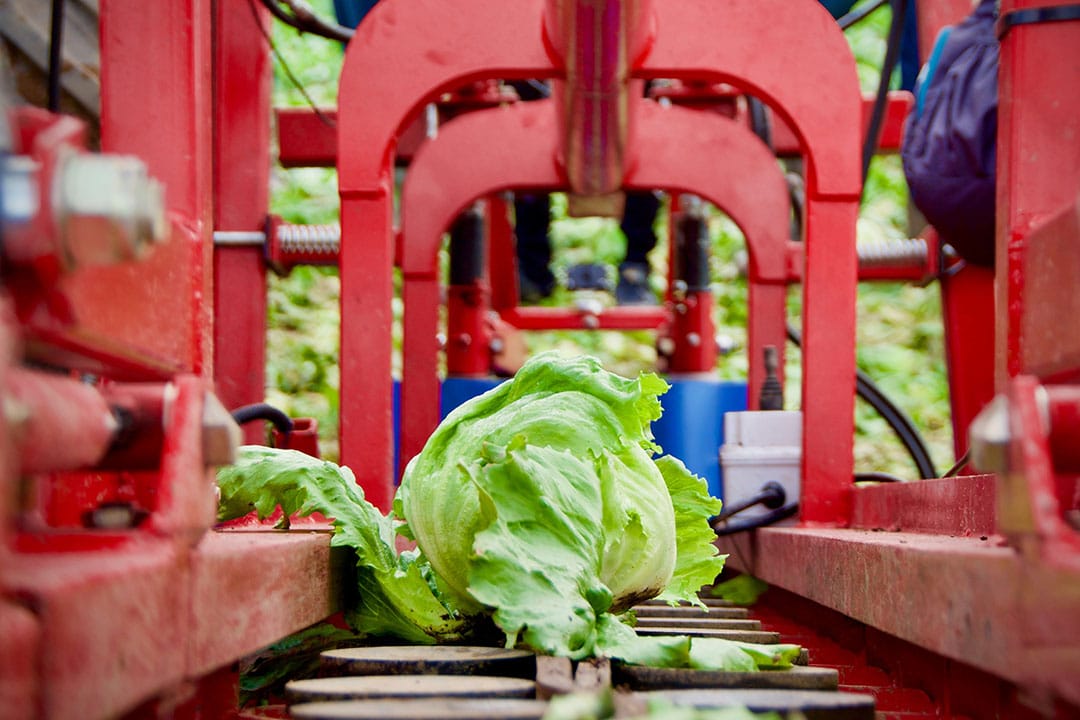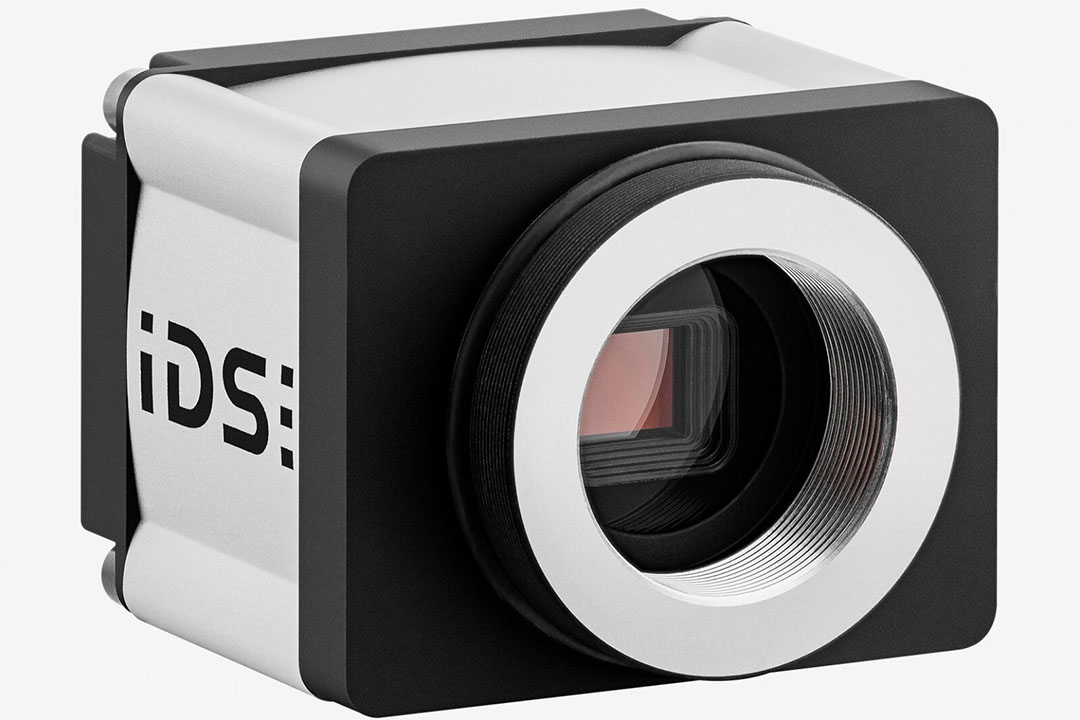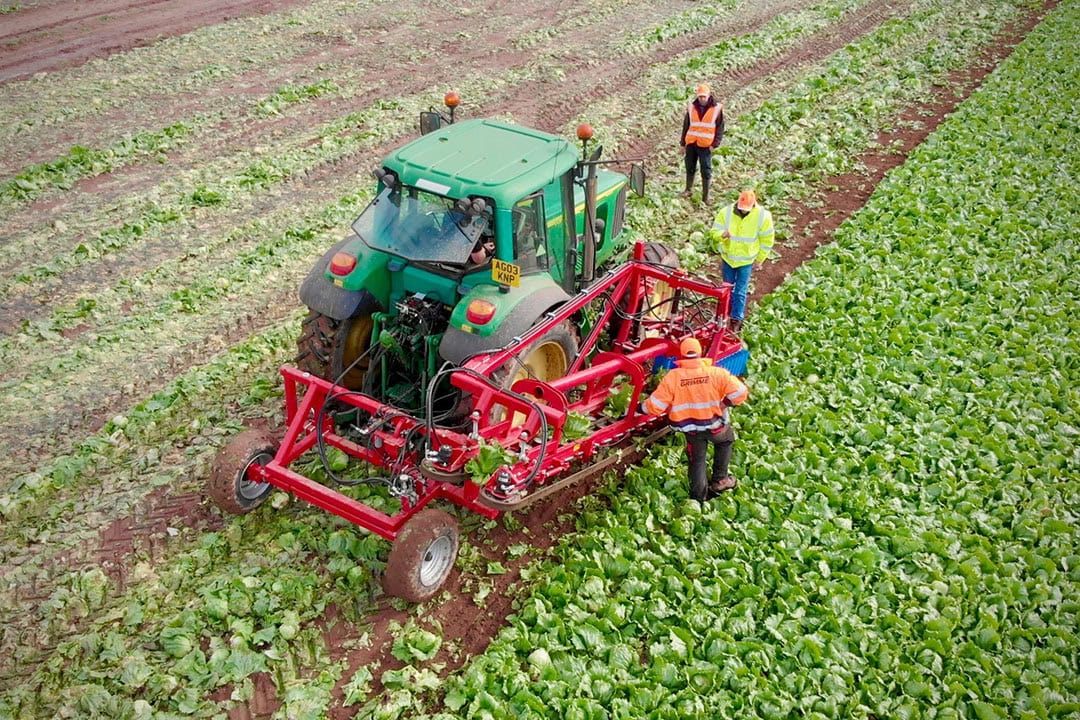Robotic solution to automate lettuce harvesting on its way

British agricultural technology and machinery experts are working with camera developer IDS to develop a robotic solution to automate lettuce harvesting.
The project – which is funded by Innovate UK – includes experts from the Grimme agricultural machinery factory, the Agri-EPI Centre (Edinburgh UK), Harper Adams University (Newport UK), the Centre for Machine Vision at the University of the West of England (Bristol) and two of the UK’s largest salad producers, G’s Fresh and PDM Produce.
Machine vision and artificial intelligence
Within the project, existing leek harvesting machinery is adapted to lift the lettuce clear from the ground and grip it in between pinch belts. The lettuce’s outer, or ‘wrapper’, leaves will be mechanically removed to expose the stem. Machine vision and artificial intelligence are then used to identify a precise cut point on the stem to neatly separate the head of lettuce.
Text continues underneath image

GigE Vision camera
“The cutting process of iceberg lettuce is the most technically complicated step in the process to automate, according to teammates from G subsidiary Salad Harvesting Services Ltd.,” explains IDS Product Sales Specialist Rob Webb. “The prototype harvesting robot being built incorporates a GigE Vision camera from the uEye FA family. It is considered to be particularly robust and is therefore ideally suited to demanding environments. “As this is an outdoor application, a housing with IP65/67 protection is required here,” Rob Webb points out.
The choice fell on the GV-5280FA-C-HQ model with the compact 2/3” global shutter CMOS sensor IMX264 from Sony. “The sensor was chosen mainly because of its versatility. We don’t need full resolution for AI processing, so sensitivity can be increased by binning. The larger sensor format means that wide-angle optics are not needed either,” Rob Webb said.
Text continues underneath image

In the application, IDS says the CMOS sensor convinces with excellent image quality, light sensitivity and exceptionally high dynamic range and delivers almost noisefree, very high-contrast 5 MP images in 5:4 format at 22 fps – even in applications with fluctuating light conditions.
The range of accessories, such as lens tubes and trailing cables, is just as tough as the camera housing and the screwable connectors (8-pin M12 connector with X-coding and 8-pin Binder connector). Another advantage according to IDS: camera-internal functions such as pixel pre-processing, LUT or gamma reduce the required computer power to a minimum.
Field trials
The prototype of the robotic mower has been used for field trials in Englandin the end of the 2021 season. “We are convinced of its potential to automate and increase the efficiency of the lettuce harvest, not only in terms of compensating for the lack of seasonal workers,” affirms Jan Hartmann, Managing Director of IDS.

Join 17,000+ subscribers
Subscribe to our newsletter to stay updated about all the need-to-know content in the agricultural sector, two times a week.
 Beheer
Beheer



 WP Admin
WP Admin  Bewerk bericht
Bewerk bericht